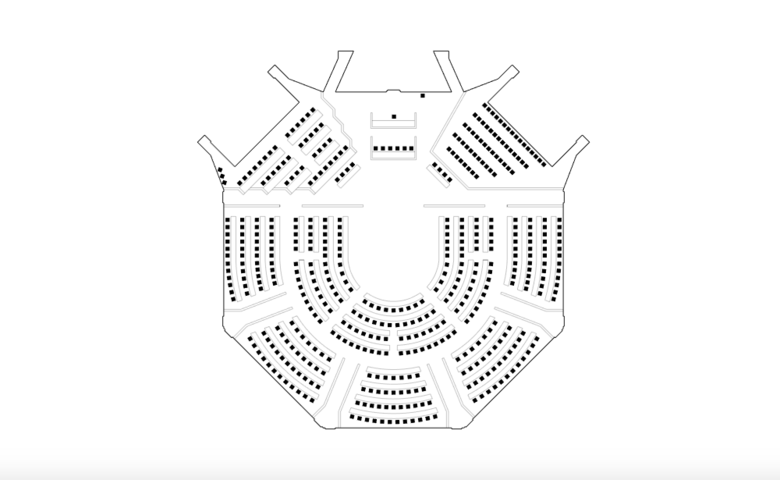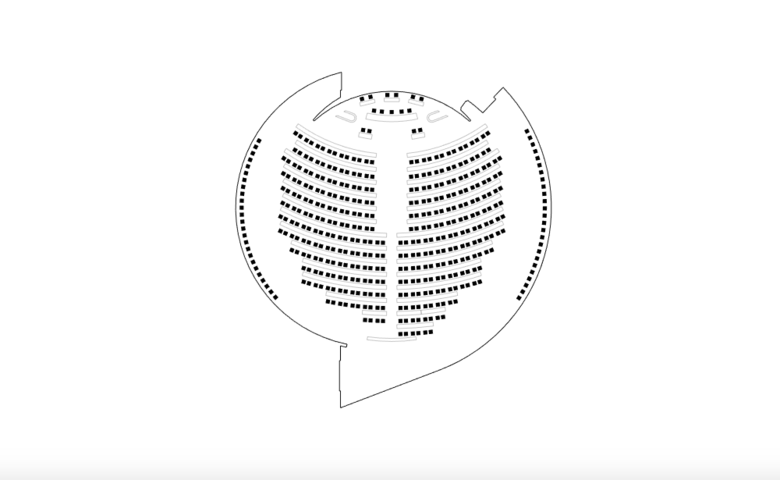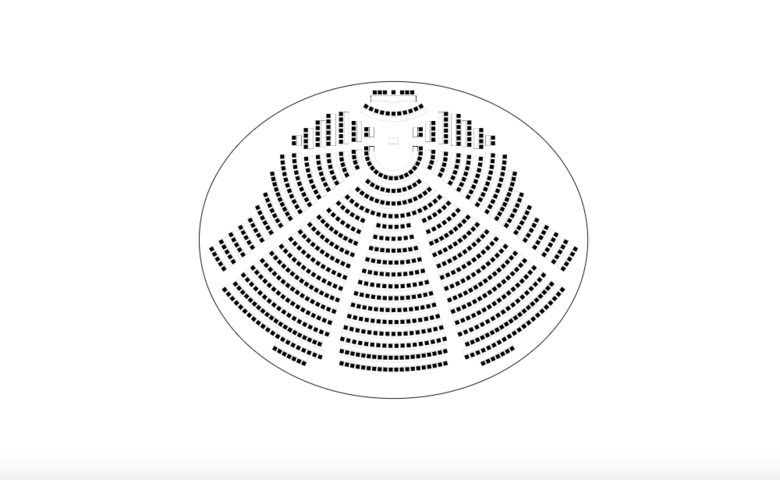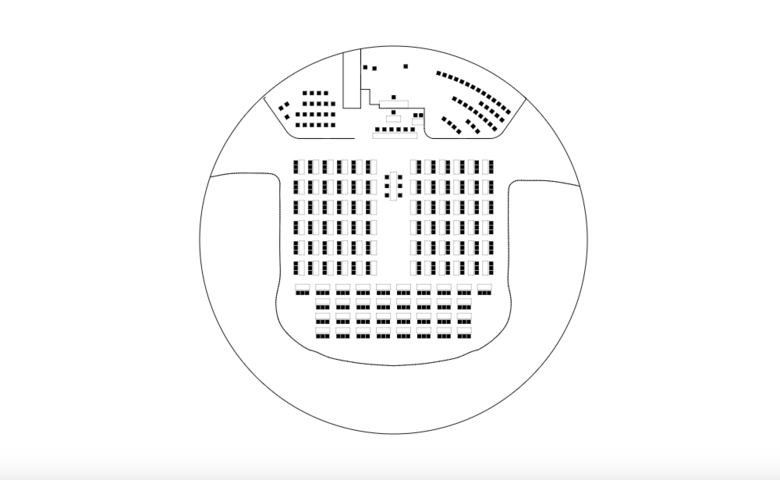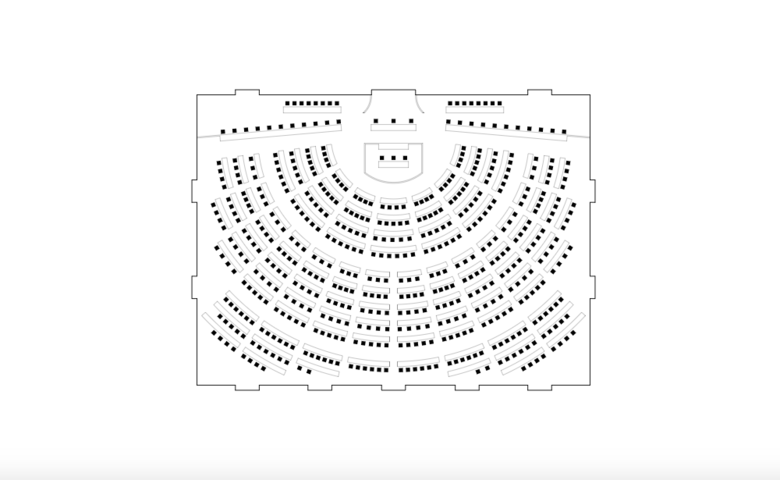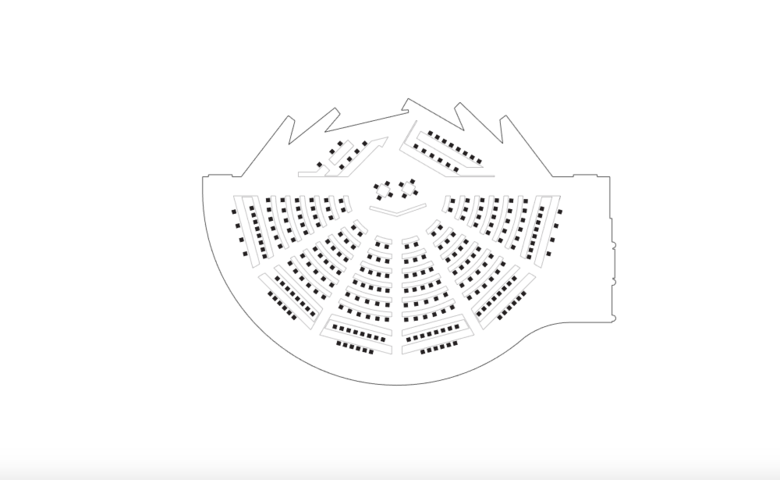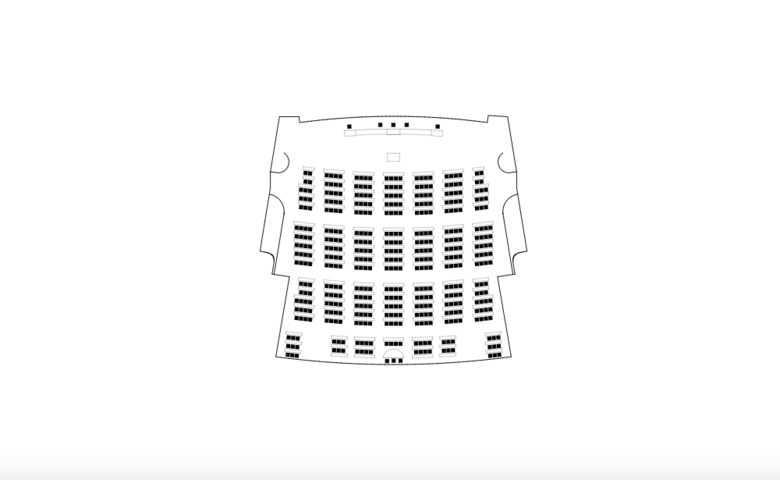The Shapes of Assembly
John Hill
6. marzo 2017
Bangladesh (Horsehoe; all images are screenshots from parliamentbook.com)
The Dutch architecture office XML, under partners Max Cohen de Lara and David Mulder van der Vegt, has spent the last six years collecting plans for each one of the 193 United Nations member states' plenary halls. The findings were published in the 2016 book, Parliament, from which we feature some of the plans.
As described by the XML duo in an article last week at The Washington Post, "Although each of the 193 United Nations member states has a parliament of some kind — albeit with varying degrees of democracy — their plenary chambers have a very limited number of shapes." These include semicircles, opposing benches, horsehoes, circles, and classrooms.
The study – displayed in part on XML's Parliament website – also compares sizes of these political spaces, which revealed: "Ironically, the scale of the assembly halls seems to be inversely proportional to the country’s rank on the Democracy Index. Parliaments in the least democratic countries convene in the largest hall."
Although a number of architecturally notable examples are present – Louis I. Kahn in Dhaka, Bangladesh (1962) and Oscar Niemeyer in Brasília, Brazil (1960), to name two highlighted here – the partners at XML contend "it is time to rethink the architecture of assembly ... with new models that are more attuned to contemporary life and to the challenges that we are facing today."
